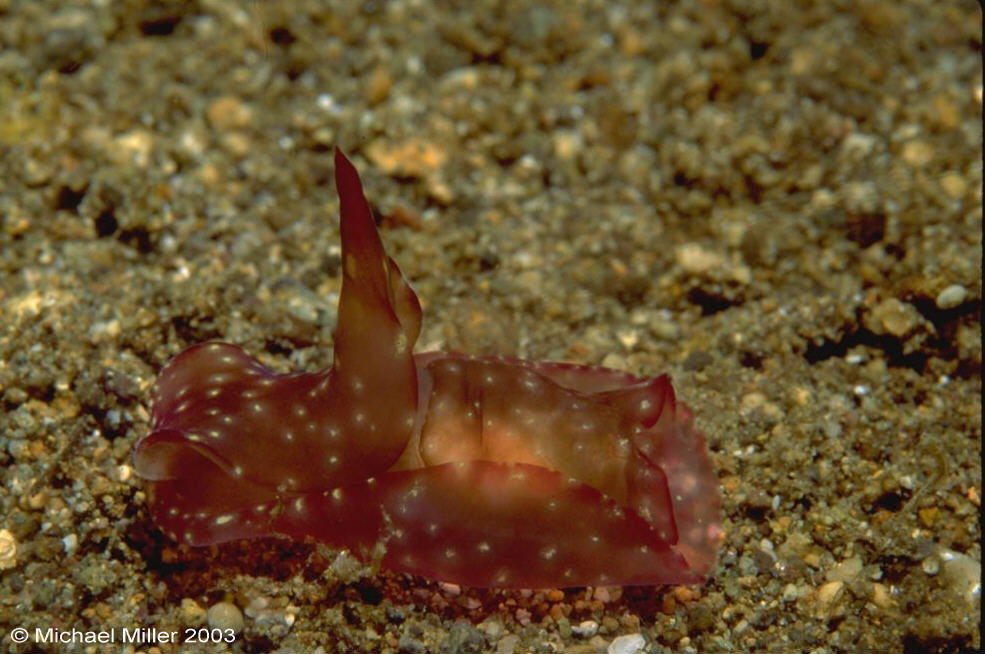 |
Philinopsis sp.
Photo Courtesy of the WebmasterBatangas, Philippines
April, 1997
This week Mike has asked me to write about a critter he photographed in the Philippines back in 1997, during one of his jolly ruckus nudibranch collecting trips with the Nudi troops from the California Academy of Sciences. I was actually on this trip and remember this beautiful little aglajid well. To date we have not seen another specimen nor have we found this critter in the literature or on any of the opisthobranch web sites.
The Aglajidae are all carnivorous hunters, and species of Philinopsis are usually found burrowing in sand or sandy mud. The posterior edge of the headshield has a tapering crest, which stands erect, and the body is cylindrical in shape. They no longer have radular teeth. This new Philinopsis is related to species of the genus Chelidonura, but can be easily separated by the absence of long pointed tails which are present in Chelidonura .
As Bill Rudman points out "There are two groups of species at present placed in the genus Philinopsis. The "typical" group, represented by Philinopsis cyanea , have a large partially eversible buccal bulb which is used to catch the bubble shells and other opisthobranchs on which they prey. Philinopsis gardineri represents the second "atypical" group which have a long muscular, tubular buccal bulb." Bill goes on to reports that "We have no information on how this second group feed but it is possible that they use the buccal bulb as a long eversible tube which can catch prey (worms?) in narrow burrows or crevices. Other species with this type of buccal bulb include Philinopsis pilsbryi and Philinopsis lineolata I am not sure which Mike's red critter falls into.
After one Slug Site viewer commented that Hans' Nudibranch of the Week a couple of weeks ago looked like a
Penguin
with huge hanging scrotums, I can't wait to hear what our more creative viewers see in the interesting shape of this slug's body.
Danville, Calif
Mar. 2003
Taxonomic information courtesy of:

David W. Behrens
Author:
Pacific Coast Nudibranchs
Send Dave mail at info@seachallengers.com
|
